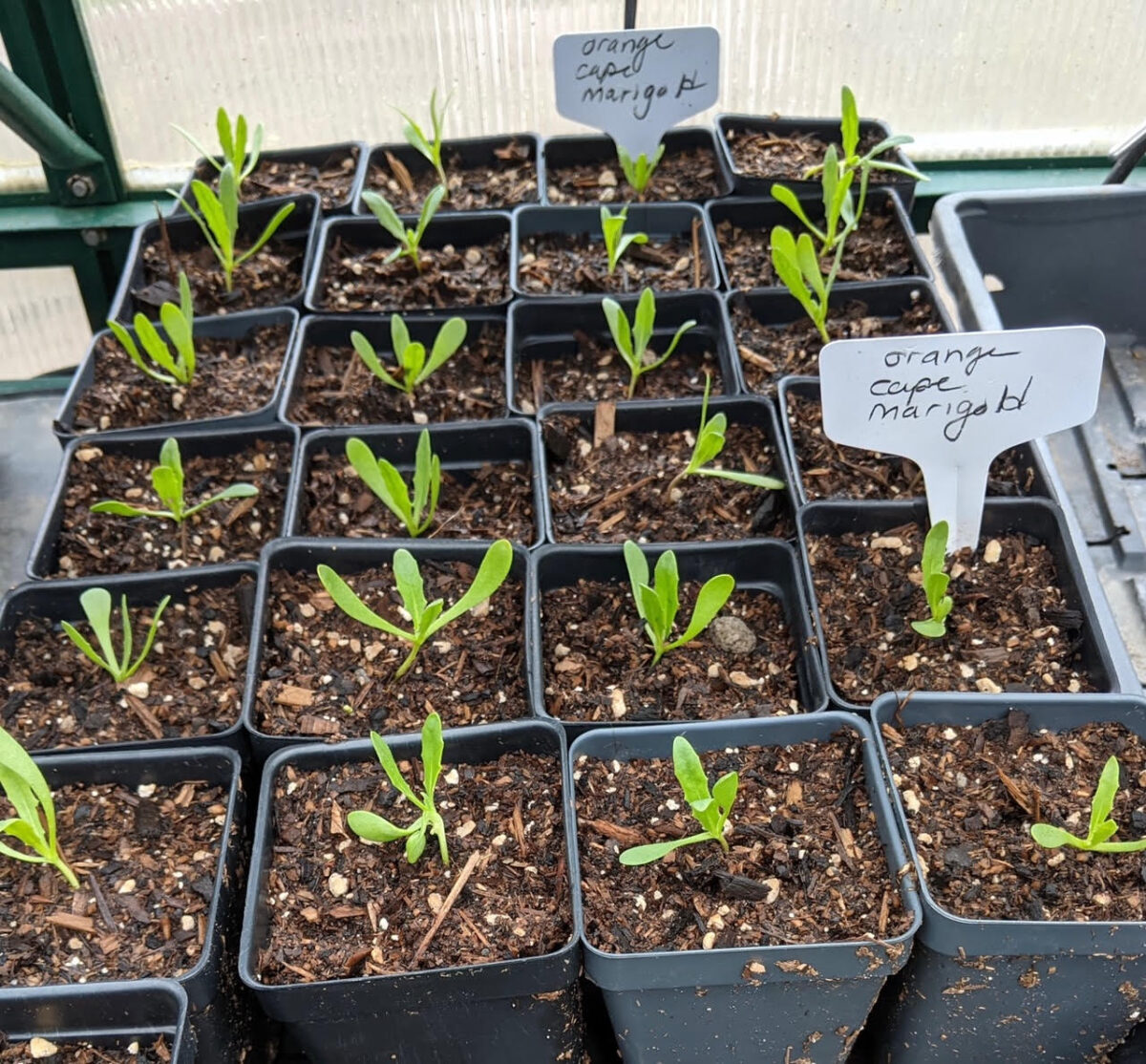By Barbara Faurot • To get a head start on spring and summer, now is the perfect time to begin starting seeds. It’s an economical way to grow a wide variety of fresh vegetables, herbs, perennials, and colorful annuals. An early start is especially helpful for plants that take longer to reach maturity and bloom, like tomatoes, peppers, columbine, or thyme.
The key to successful seed starting is providing warmth, light, water, air circulation, and 5-10 weeks of daily care. With so many variables, it’s best to have fun and experiment to see what works in your garden’s micro-climate.
According to Linda Gilkeson, Ph.D., author of Backyard Bounty: The Complete Guide to Year-Round Organic Gardening in the Pacific Northwest, the process starts with a very warm germination period indoors on a heat mat or other heat source until the tips of shoots show, usually 4-8 days. Then, you’ll move plants to cooler conditions with 14-16 hours of daily bright light for the growth period. Once seedlings are ready to move outdoors, gradually harden them off through exposure to full sun and cooler temperatures.
Timing is key. To get a jump on the season, plant seeds four to six weeks prior to the date when you plan to transplant them outside in the garden. In Port Townsend, the average last frost is in early-mid April, but sowing dates vary by plant variety, by micro-climate, and by year. Seed packets will usually indicate the number of days to harvest and other specifics to help with planning your schedule.
Sow small seeds closely together in seeding trays, pots, or soil blocks (soil blocking is a method of starting seeds that allows for healthy root growth, avoids plastic, and minimizes transplant shock). Plant large seeds directly into the final transplant pot.
Re-used trays or pots can be sterilized with a 10% bleach solution and rinsed with clean water. Use a disease- and weed-free sterilized potting medium designed for seed starting. Garden soil and compost are not recommended, as they can carry weed seeds, insects, or diseases. Fill trays or pots with the potting medium and press down gently, saturate with water and drain excess moisture. Water lightly once a day or as needed to maintain moist but not saturated soil.
In general, the planting depth for most seeds is about twice the size of the seed, say ⅛-½ inch for small seeds, and 1-2 inches for larger seeds. Some seeds like columbine or poppy need light to germinate and should not be covered, so check each seed package for directions. Cover the container with clear plastic wrap or place in a clear plastic bag, and remove for a few minutes each day to provide ventilation.
Once seeds germinate, remove the plastic wrap and place under lights for 14-16 hours a day. Insufficient light will cause elongated seedlings that are weaker and subject to fungal pathogens. Most home windows won’t provide enough light, so LED or fluorescent lights are recommended, generally placed a few inches above the plant. You might choose to sow a couple of seeds in each cell. The first set of seed leaves, or cotyledons, are part of the seed’s embryo and may not resemble the true or mature leaf shape. True leaves are the second set of leaves that perform photosynthesis for the plant. If both seeds emerge, once they get their first set of true leaves, you can thin one by snipping it to the base, and transplant to individual containers at this point.
Most seed germinates at 70-75 degrees, but some need warmer temperatures. After germination, most plants prefer temperatures of 70 degrees during the day and 60 degrees at night. Unheated greenhouses or cold frames can be used if seeds are not started too early in the season.
Before transplanting, harden off to help seedlings withstand transplant shock to their new environment. This will result in a temporary slower growth rate, allowing the plant to store energy. Methods include reducing watering and gradually increasing exposure to wind and colder temperatures, say 5-10 degrees lower than indoors. Plants can be set outside during the day for the first week, and for the entire day and night in the second week, covering them at night to avoid cold damage.
Some hardy varieties can be direct seeded outdoors toward the end of February. While recommended dates vary by plant type and specific location, possibilities include varieties of carrot, onion, pea, borage, poppy, and sunflower.
Have fun and experiment to see what works. Dr. Gilkeson’s website offers more detail on the art and science of seed starting: http://www.lindagilkeson.ca/pdf/Starting%20seeds%202022%20web.pdf
The free Jefferson County Extension Seed Library will open at the Jefferson County Library in March. Check out locally developed seeds for your own garden, and at the end of the season, save seeds and return them to the library to share with others: https://extension.wsu.edu/jefferson/master-gardener-seed-library/
Barbara Faurot is a Jefferson County Master Gardener and Master Pruner, working with other volunteers who serve as community educators in gardening and environmental stewardship.
Published in the Port Townsend Leader February 14, 2024


